Almost all of us will, at some point, probably try to start something. It could be that we see a need for the arts in our community that we can fill, or it could be we find ourselves possessed of a passion that can, with a little strategy and effort, become a business. However it happens, many musicians, maybe even most of us, will find ourselves in the position of trying to organize a group of people!
This interview, between Jenny Davis of the Memphis-based Blueshift ensemble and Celine Thackston, who founded Nashville’s chatterbird, reveals a bit of the inspiration, protocol and passion behind the formation of two successful chamber ensembles devoted to experimental classical music. – editor, Jessica Dunnavant
JD: What inspired you to start chatterbird?
CT: We lived in Oregon for a few years during my doctoral work and I was really inspired by some of the amazing things that were happening, particularly in the Portland area, in the world of “alternative” classical music. This primarily meant that ensembles were seeking out alternative venues; experimenting with musical forms, concert format, and instrumentation; and bringing audiences more accessible, informal, and affordable experiences.
The groups that I worked with were so incredibly inspiring to me. In particular, my experience with Opera Theater Oregon was eye-opening. OTO did wild and wonderful things, like reworking a Wagner opera into an episode of Baywatch — !! — but they also created a dreamy reimagining of Pelleas and Melisande with live orchestration and staging interwoven with French new wave film (all presented in a beautiful old movie theater where audiences could have a snack, drink a beer, and gather with friends afterward).
I did more than one hilariously fun gig with an orchestra of electric guitarists who played great classical repertoire. I was delighted to play flute on several Filmusik projects, which added live original compositions and sound effects to beloved cult classic films. And, I helped out with the local chapter of Classical Revolution PDX, which inspired both professionals and amateurs to get out and make classical music in the community – bars, coffee shops, schools, art galleries – and made it an experience where all were welcome to make music together. Anyway, all that is just to say that I got to witness some incredibly innovative and ambitious music-making, created in the spirit of community building, and I was grateful for the opportunities I had to be involved and to learn.
We left Oregon in 2013 and returned to Tennessee, and at that time there was really only one group in Nashville performing contemporary chamber music, ALIAS Chamber Ensemble. They are a brilliant ensemble, but I saw an opportunity for taking music out of concert halls and experimenting more broadly with format. I love Nashville and am constantly excited by the many different types of musical talent you run across every day – your favorite pop songwriter who also has a degree in music composition with a classical focus, or all of the amazing Nashville session musicians who also play in regional orchestras, bluegrass groups, and big bands. I wanted to explore ways that we could work with all of them and create new music together. So a lot of our music is very new, much of the repertoire is home grown, and many of our members also contribute compositions, arrangements, or inventive projects each season.
We have had a Composer in Residence since we formed five years ago. Our current resident composer is Wu Fei, who is also an amazing improviser and guzheng virtuoso. She has written original compositions for us, and we’ve showcased other past work in her repertoire while collaborating on several creative projects. As we have grown, we’ve also started to work with outside composers like Ted Hearne, Jason Treuting, and Chris Cerrone, who have all come in for residencies with us, and we’ve loved helping them bring projects to life, as well.
JD: Was it a group effort from the beginning or did you have the idea and then reach out to colleagues who might be interested in playing with the group?
CT: At the outset, it was just me reaching out. I’d lived in Tennessee previously but focused most of my teaching outside of the city of Nashville, so when we came to Nashville, my network of musician friends in the city was not huge. I reconnected with our clarinetist, Emily Bowland, who is incredible, and she helped me to build an ensemble. Our first year was pretty lean. My husband and I invested in the first year of the group, so the pay scale was not high in comparison to other gigs around town. When you live in a town that thrives in part on recording sessions, it’s difficult to compete. In retrospect, I wish that I’d spent more time here seeking out people with a shared and well-defined vision, so that it could have been more of a focused and “sweat equity” invested group effort from the start, when things were particularly stressful. But we have found our tribe in the years since, so I’m grateful! And as we’ve continued to build awareness and raise money, compensation has improved – which is great!
CT: Can you tell me more about Blueshift and how it came into existence?
JD: I moved back to my hometown, Memphis, after I finished graduate school in Boston, where I became friends with quite a few student composers at the different conservatories there. I went to a couple of new music summer festivals with many of those composers, so I began playing their pieces whenever possible and found that collaborative process to be incredibly fun, challenging, and rewarding. When I returned to Memphis, I wanted to get a group of people together to play music in more casual settings, and as the one organizing the project, my preference was to program newer works. So in 2016, I teamed up with Jonathan Kirkscey, a cellist and composer, to find musicians who were interested in the idea (many of whom are members of the Memphis Symphony Orchestra) and we put on our first concert at a rock venue a few months later. We collaborated with Harlan T. Bobo, a beloved Memphis musician, performing arrangements of his songs as well as pieces by Missy Mazzoli, Nico Muhly, Philip Glass, Donnacha Dennehy, and Frederic Rzewski. Our hope was to reach people who might go see a Harlan T. Bobo show, as well as those who would be likely to attend a concert of new music.
JD: Do you share responsibilities amongst ensemble members? If so, what are the various roles musicians have in the group?
CT: Primarily, the bulk of responsibilities still fall on my shoulders (See previous answer! Find your tribe early!) so I struggle with burnout. Ensemble members do pitch in when needed. They’re also wonderful with making community connections when we need help with anything, and in spreading the word about concerts among their networks. And honestly, I think if I asked for more help that they would be generous with their time. But my group is full of busy working musicians, who have unending gigs, teaching jobs, families, and piles of other obligations, so I have tried to be judicious with my requests for help.
As our Board of Directors has grown, they have provided an incredible amount of relief, particularly in the way of marketing, project management, planning, financial know-how, and concert evening front-of-house duties. This year, we are able to hire our very first part-time administrative employee. I’m now able to share some of the administrative tasks, which frees up my time for fundraising and project planning. We’ve also gotten a bit of grant funding to help with marketing and PR, which I hope will reduce some of the strain on me and on the board while helping us to be more consistent in our messaging.
CT: What were some of the challenges you faced when starting the ensemble? What are some of the great opportunities you’ve had?
JD: When Blueshift started, we were doing everything totally from scratch. I had never really organized a concert that wasn’t at a school or in a typical performance venue, and I had never gotten a large group of musicians together to do an entire program. I had to figure out all of the logistics on the fly, which was exciting but also a little stressful. There are so many things to remember and so many small details that can easily fall through the cracks. Also, it’s important to begin with at least a rough idea of the ensemble’s mission, so we made sure to spend a lot of time figuring that out and what our role would be in the Memphis community. Changing gears from organizing mode to artistic and creative mode was (and still can be) a challenge. So asking for input and help is important!
Though there were some challenges, it was all exciting and fun. It never really felt like work. We have had some wonderful opportunities in our relatively short existence, as well. One of my favorite opportunities that Blueshift has had is our ongoing collaboration with ICEBERG New Music, a collective of composers based in New York City. The ten composers have come to Memphis the past two summers to workshop their pieces with us for several days, and then we put on a free concert for the community. In addition to performances, the composers give presentations and work with young musicians in Memphis. Crosstown Arts hosts the composers and the performances, and that organization has been incredibly supportive of Blueshift in these first years.
JD: What do you hope to achieve in the Nashville community with chatterbird? What is the mission of the ensemble?
CT: chatterbird’s mission is to explore alternative instrumentation and stylistic diversity in order to create thoughtful and inventive musical experiences. I think we fill a gap in the community for classical music experiences that are less formal and more responsive and relevant in the community than a typical chamber music ensemble. We are still a very small ensemble, in terms of budget and staff capacity, but I think we do a good job of making connections and generating interesting programs that work in partnership with other arts and community organizations.
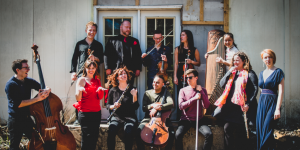
As an example, this year we are partnering with Tennessee Immigrant and Refugee Rights Coalition, the Jewish Federation of Nashville and Middle Tennessee, the Jewish Community Center, the Chinese Arts Alliance of Nashville, and others, around Hello Gold Mountain, a new composition from our Composer in Residence Wu Fei. The work is a requiem for the lost possibilities of the Jewish community of Shanghai. It tells the stories of Jewish refugees who fled from Europe to Shanghai during WWII, and later from Shanghai to San Francisco during the Chinese Civil War. Drawing on the musical traditions of eastern European Jewish culture and China, the piece reflects on the cultural impact of refugee populations and their significance both then and now. We’re leading up to the premiere in February 2019 with a range of panels, performances, and educational events that highlight the stories of these refugees.
Projects like this one are squarely where we belong – highlighting how music can be used to tell important stories, while helping to advocate and educate within our community. Nashville has a large population of refugees, so I feel like this is especially relevant here.
We have also worked to highlight, in particular, the work of women composers. It’s been a natural part of who we are since our inception, but next season’s programs will magnify this focus even further.
CT: How important is Memphis in the existence of Blueshift? Is it an ensemble that could exist in other places?
JD: Memphis is vitally important in the existence of Blueshift. Aside from there being little new music performed outside of the university setting, the musicians here are eager to try new things and really put 100% behind all they do. The Memphis community is unlike any I have experienced. There is a genuine curiosity and a surprising number (to me, at least at first) of artists and musicians who are really adventurous and creative and eager to experience new things. Though Philip Glass has no shortage of performances, his music isn’t often performed in Memphis and people are excited to have the chance to hear his compositions performed. That’s just one example.
If Blueshift existed in another city, I don’t think it would be quite the same ensemble. Eventually, I would like the ensemble to grow into a more structured organization, but right now we still operate a bit off the cuff as ideas naturally appear. I guess it’s a little like Memphis itself – we do what we do because we really love it and though it may not always be very glamorous or flashy, it is always exciting, genuine, and done with a lot of love and passion.
CT: What is important to you about an audience’s experience at your concerts?
JD: Foremost, I hope audiences feel like they are just as important to the whole experience as the musicians performing are. We aim to have a relaxed atmosphere and encourage audience members to feel free to ask questions and share their thoughts on the music. If Blueshift changes the perception of classical music for a few people, I would be perfectly happy. As musicians, we know that there is a whole world of classical music – new and old – and that there is something out there for everyone. We aim to bring at least some of that to spaces that are inviting and more familiar to audiences who don’t typically go to a symphony concert, for example.
JD: When you started chatterbird, did you have a plan to fund the project? Has your method of fundraising changed over time?
CT: During our first year, we operated under fiscal sponsorship, which is essentially a way that a group can receive donations and grants using the nonprofit status of an “umbrella” organization. We were able to access a small amount of funding through that setup that helped a couple projects to happen. In general, I think that fiscal sponsorships are good ways to test the waters before officially filing as a nonprofit organization. My husband and I also invested some of our own money in it at first. I wanted to professionalize musicians’ roles by compensating them from the start, which took some startup money. Musicians need compensation, obviously, for the work that they do, but it was also important for me to make the job more “valid” for musicians as we were first starting out and chatterbird’s concept was still pretty novel.
We filed our nonprofit paperwork in 2015. I think it was a necessary step to allow for continued growth. Since then, fundraising has changed for the better, though it is still very challenging. I am a grant writer, so that side of fundraising feels more natural to me and remains our largest income stream. But we are working to build up an individual donor base and are s-l-o-w-l-y making progress. It’s difficult in Nashville right now because the city has experienced such intense growth. While there are lots of new potential audiences and donors in town, the number of artists, ensembles, and entertainment offerings have also grown by leaps and bounds, so we compete with a lot.
We work with friends around town to get some in-kind donations and sponsorships, which help to keep down costs – program and poster printing, advertising, beer sponsorships, discounted/donated equipment – all of it helps the bottom line, bit by bit.
JD: How do you promote your events? Do you have any suggestions for reaching new audiences?
CT: Primarily, we rely on social media, press coverage, and word of mouth. When we started, there were some really great avenues in the press for previews and reviews. I think that the support from the press really helped us to get people in the door. But, unfortunately, both printed publications and digital media focused on the arts in Nashville have largely disappeared. I think it’s a challenge that all arts groups in town are struggling with right now. We’re lucky to have a bit of one-time professional development funding through the state arts commission that is helping us with building more consistent marketing and PR strategies that expand beyond the press and social media.
As for reaching new audiences, I most often hear new attendees say that they found us through the community events we are involved in pretty regularly throughout the season. We usually do several performances around town in collaboration with other arts and community groups each year. This partnership building feeds our work. In addition to the opportunities to share what we do with new audiences, we inevitably find new artistic connections among audience members, organizers, and other artists. It helps us feel connected and to plant seeds for future projects.
CT: What resources have been most important to you as you worked independently as a musician? Any important time or project management resources to share?
JD: I think the musical community may be the most important resource I’ve had as an independently working musician. Nothing is accomplished by one person alone. Talking with and creating relationships with other musicians and artists provides support, creates opportunities, and inspires more creativity.
I’m still trying to find the best ways to manage time, but I’ve found that I work best at certain tasks at certain times of the day. I like to wake up early to work on organizational things and begin practicing around 10 a.m. if I can. Of course, teaching can change all of that. One project management application I like is Asana. It’s easy to use and you can jot down tasks as you think of them and assign a due date. Best of all, when you complete a task, a unicorn flies across the screen!
CT: Have musicians (both classical and nonclassical) been open to working with you or has there ever been an element of education that has to happen for them to participate?
JD: Yes, there has sometimes been some element of education necessary, at least to some extent, with both classical and nonclassical musicians that we’ve worked with. Some of the classical musicians we’ve worked with have not actively played much contemporary music since they were students and a lot of developments have occurred in classical music since that time. They’re enthusiastic about learning new techniques, and programming music with these techniques seems to always be an exciting challenge they want to explore. Many of them play with the MSO and often don’t encounter things like just intonation, for example, so I think they appreciate learning about new techniques.
Many of the nonclassical musicians we’ve worked with have actually had some experience performing with classical musicians, whether that’s from previous collaborations or working with musicians in recording sessions. We performed Rzewski’s ‘Coming Together’ with Harlan T. Bobo as the speaker. Having a nonclassical musician participate in something like that definitely brings a fresh interpretation and I love that.
JD: Just for fun, if you could collaborate with any composer or performer today, who would it be?
CT: I am digging the work of Leila Adu right now, and hope to perform some of her music in our upcoming season: http://www.leilaadu.com/
JD: What advice would you give to someone interested in starting their own ensemble? From your experience, what would you say is the first step?
CT: Take the time to find your people first. If everyone buys into it together and shares the work, it helps to spread a sense of ownership. That way, the administrative burden and planning process doesn’t just fall on one or two people. And do it early, if you can. If you are at a university, take advantage of the resources you have – rehearsal and performance facilities, musicians who are eager to collaborate, faculty knowledge, library access, composer communities, and even potential funding streams. Study (or take coursework) in helpful topics like marketing, financial management, grant writing, and fundraising. I was lucky in my doctoral work to have a secondary area of study in arts management. Paired with a certificate program in nonprofit management, I felt reasonably prepared to help my group grow…though it has been a lot of work!
CT: Is there anything you wished you learned in school that you’ve had to pick up on the fly as a freelancer?
JD: A lot of things! In no particular order, how to write a press release, how to make a good website, how to fundraise, how to organize a concert at a venue outside of the university setting and how to write a grant! Though it would have been great to have experience with these things before beginning a life as a freelancer, I’m glad there are always more things to learn and improve upon. It keeps things exciting!
About the Authors
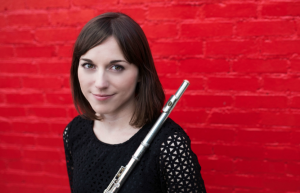 Jenny Davis is a flutist based in Memphis, TN and Columbia, SC, where she is pursuing a DMA in Flute Performance at the University of South Carolina. She is the director of Memphis-based Blueshift Ensemble, one half of experimental duo if.else, and frequently performs with groups such as the Memphis Symphony Orchestra, Memphis Repertory Orchestra, and Luna Nova Ensemble. At USC, she is a Graduate Teaching Assistant for the flute studio. In addition to her work as a graduate student at USC, Jenny is a performance coordinator at Crosstown Arts in Memphis, currently developing concert series to take place in the 1.5 million square foot building’s various performance spaces. Recently, she has been a finalist in several young artist competitions including those of the Flute Society of Kentucky, COFA, Byron Hester, Myrna Brown (semifinalist), and the Raleigh Area Flute Association. Jenny holds degrees from Middle Tennessee State University (B.M.), Boston University (M.M.) and two years of additional flute study at The Studio with Trevor Wye in England. Her primary teachers include Jennifer Parker-Harley, Linda Toote, Deanna Little and Trevor Wye.
Jenny Davis is a flutist based in Memphis, TN and Columbia, SC, where she is pursuing a DMA in Flute Performance at the University of South Carolina. She is the director of Memphis-based Blueshift Ensemble, one half of experimental duo if.else, and frequently performs with groups such as the Memphis Symphony Orchestra, Memphis Repertory Orchestra, and Luna Nova Ensemble. At USC, she is a Graduate Teaching Assistant for the flute studio. In addition to her work as a graduate student at USC, Jenny is a performance coordinator at Crosstown Arts in Memphis, currently developing concert series to take place in the 1.5 million square foot building’s various performance spaces. Recently, she has been a finalist in several young artist competitions including those of the Flute Society of Kentucky, COFA, Byron Hester, Myrna Brown (semifinalist), and the Raleigh Area Flute Association. Jenny holds degrees from Middle Tennessee State University (B.M.), Boston University (M.M.) and two years of additional flute study at The Studio with Trevor Wye in England. Her primary teachers include Jennifer Parker-Harley, Linda Toote, Deanna Little and Trevor Wye.
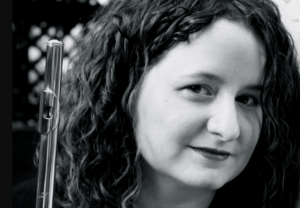 Celine Thackston is based in Nashville, Tennessee. Hailed for her innovative programming and musical style, she is the Founder and Artistic Director for chatterbird, a contemporary music ensemble. Celine regularly freelances in the region. Along with regular work as a substitute flutist for orchestras in the area, she has performed on studio recordings for movies, video games, and popular artists. Celine is also a skilled grant writer, and supports a range of nonprofits and individual artists through development consulting services. She serves as the Development Director for the Big Ears Festival and coordinates grant writing efforts for the Nashville Symphony.
Celine Thackston is based in Nashville, Tennessee. Hailed for her innovative programming and musical style, she is the Founder and Artistic Director for chatterbird, a contemporary music ensemble. Celine regularly freelances in the region. Along with regular work as a substitute flutist for orchestras in the area, she has performed on studio recordings for movies, video games, and popular artists. Celine is also a skilled grant writer, and supports a range of nonprofits and individual artists through development consulting services. She serves as the Development Director for the Big Ears Festival and coordinates grant writing efforts for the Nashville Symphony.
Celine completed her doctorate in flute performance from the University of Oregon, where she was a Graduate Teaching Fellow and studied with Molly Barth, founding flutist of eighth blackbird. She received her master’s degree in flute performance from New York University as a student of revolutionary flutist Robert Dick. She has since served on the faculty of Middle Tennessee State University and Fisk University, and has been a teaching artist and clinician for workshops around the United States.

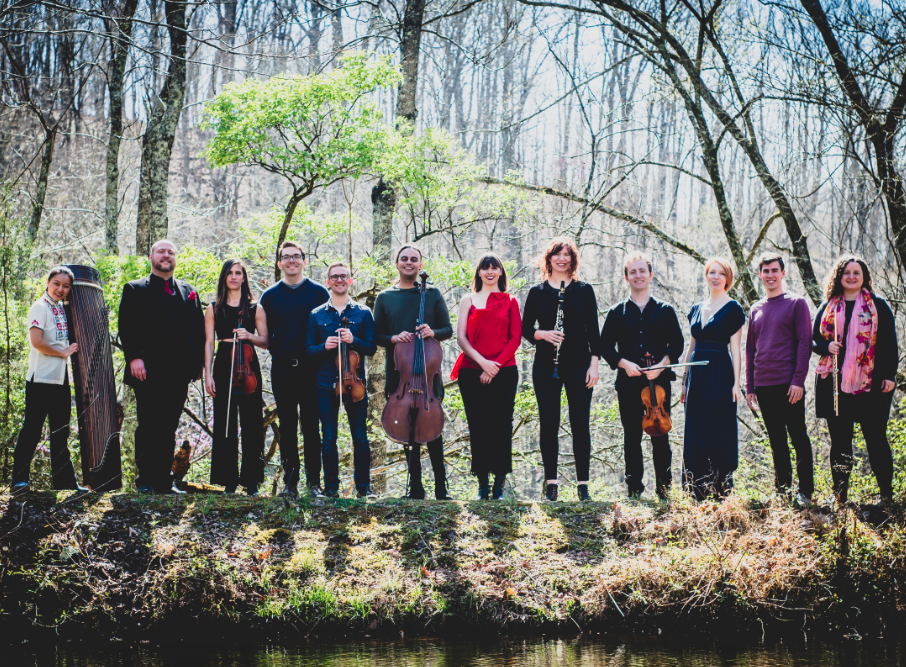
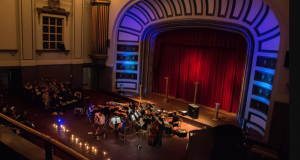
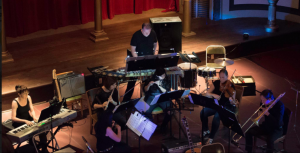
Great story. Celine! You and Jenny are doing such fine work and building the path to the future. Don’t falter–the world needs you.